Acute Rift Valley fever virus infection induces inflammatory cytokines and cell death in ex vivo rat brain slice culture
- PMID: 38546100
- PMCID: PMC10995633
- DOI: 10.1099/jgv.0.001970
Acute Rift Valley fever virus infection induces inflammatory cytokines and cell death in ex vivo rat brain slice culture
Abstract
Rift Valley fever virus (RVFV) is an emerging arboviral disease with pandemic potential. While infection is often self-limiting, a subset of individuals may develop late-onset encephalitis, accounting for up to 20 % of severe cases. Importantly, individuals displaying neurologic disease have up to a 53 % case fatality rate, yet the neuropathogenesis of RVFV infection remains understudied. In this study, we evaluated whether ex vivo postnatal rat brain slice cultures (BSCs) could be used to evaluate RVFV infection in the central nervous system. BSCs mounted an inflammatory response after slicing, which resolved over time, and they were viable in culture for at least 12 days. Infection of rat BSCs with pathogenic RVFV strain ZH501 induced tissue damage and apoptosis over 48 h. Viral replication in BSCs reached up to 1×107 p.f.u. equivalents/ml, depending on inoculation dose. Confocal immunofluorescent microscopy of cleared slices confirmed direct infection of neurons as well as activation of microglia and astrocytes. Further, RVFV-infected rat BSCs produced antiviral cytokines and chemokines, including MCP-1 and GRO/KC. This study demonstrates that rat BSCs support replication of RVFV for ex vivo studies of neuropathogenesis. This allows for continued and complementary investigation into RVFV infection in an ex vivo postnatal brain slice culture format.
Keywords: Rift Valley fever virus; brain slice culture; bunyavirus; ex vivo model; neurotropic virus; viral encephalitis.
Conflict of interest statement
The author(s) declare that there are no conflicts of interest.
Figures

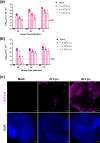
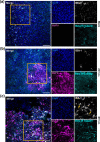
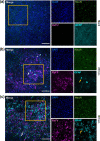
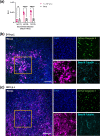
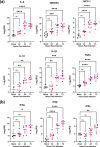
Similar articles
-
Rift Valley Fever Virus Infects the Posterior Segment of the Eye and Induces Inflammation in a Rat Model of Ocular Disease.J Virol. 2022 Oct 26;96(20):e0111222. doi: 10.1128/jvi.01112-22. Epub 2022 Oct 4. J Virol. 2022. PMID: 36194021 Free PMC article.
-
Peripheral Blood Biomarkers of Disease Outcome in a Monkey Model of Rift Valley Fever Encephalitis.J Virol. 2018 Jan 17;92(3):e01662-17. doi: 10.1128/JVI.01662-17. Print 2018 Feb 1. J Virol. 2018. PMID: 29118127 Free PMC article.
-
Favipiravir (T-705) protects against peracute Rift Valley fever virus infection and reduces delayed-onset neurologic disease observed with ribavirin treatment.Antiviral Res. 2014 Apr;104:84-92. doi: 10.1016/j.antiviral.2014.01.016. Epub 2014 Jan 31. Antiviral Res. 2014. PMID: 24486952 Free PMC article.
-
Advances in Understanding Neuropathogenesis of Rift Valley Fever Virus.Annu Rev Virol. 2022 Sep 29;9(1):437-450. doi: 10.1146/annurev-virology-091919-065806. Annu Rev Virol. 2022. PMID: 36173701 Free PMC article. Review.
-
Single-cycle replicable Rift Valley fever virus mutants as safe vaccine candidates.Virus Res. 2016 May 2;216:55-65. doi: 10.1016/j.virusres.2015.05.012. Epub 2015 May 27. Virus Res. 2016. PMID: 26022573 Free PMC article. Review.
Cited by
-
Rift Valley fever virus is able to cross the human blood-brain barrier in vitro by direct infection with no deleterious effects.J Virol. 2024 Oct 22;98(10):e0126724. doi: 10.1128/jvi.01267-24. Epub 2024 Sep 30. J Virol. 2024. PMID: 39345143 Free PMC article.
-
Characterization of neural infection by Oropouche orthobunyavirus.bioRxiv [Preprint]. 2024 Oct 12:2024.10.11.617875. doi: 10.1101/2024.10.11.617875. bioRxiv. 2024. PMID: 39416126 Free PMC article. Preprint.
References
Publication types
MeSH terms
Substances
Grants and funding
LinkOut - more resources
Full Text Sources
Miscellaneous

